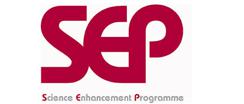- View more resources from this publisher
 Gatsby Science Enhancement Programme
Gatsby Science Enhancement Programme
Catalyst Volume 22 Issue 1: Full Magazine
This issue of Catalyst includes the following articles:
Food Waste Recycling - Power from Potato Peelings
This article looks at how food waste can be treated by anaerobic digestion to produce methane and fertiliser.
Most organisms have some kind of 'body clock'; scientists are trying to show how genes are the basis of this.
This article describes how plants respond to many different stimuli including light and gravity, but questions still remain to be answered.
An article explaining why sand is a fascinating material to explore, and describes what it is made of.
Iron and Alzheimer’s - Studying Metals in the Brain
This article focuses on how X-rays produced by the Diamond synchrotron are used to discover the distribution of iron and other metals in the brain tissue of people who have suffered from Alzheimer's disease.
Bad Science - Patterns, Trends and Dastardly Traps
This article explains the way scientists work, how they conduct their research and look for patterns in data. It also investigates what can go wrong during the process of spotting patterns in the collated information.
This article describes how a lava lamp works and what is needed to make one at home.
This article introduces Tom Denbigh who describes how he has worked as a volunteer on scientific projects to gain experience before his degree course.
Using different wavelengths of radiation, spacecraft have helped scientists to understand more about volcanoes.
Catalyst is a science magazine for students aged 14-19 years. Annual subscriptions to print copies of the magazine can be purchased from Mindsets.
Show health and safety information
Please be aware that resources have been published on the website in the form that they were originally supplied. This means that procedures reflect general practice and standards applicable at the time resources were produced and cannot be assumed to be acceptable today. Website users are fully responsible for ensuring that any activity, including practical work, which they carry out is in accordance with current regulations related to health and safety and that an appropriate risk assessment has been carried out.





